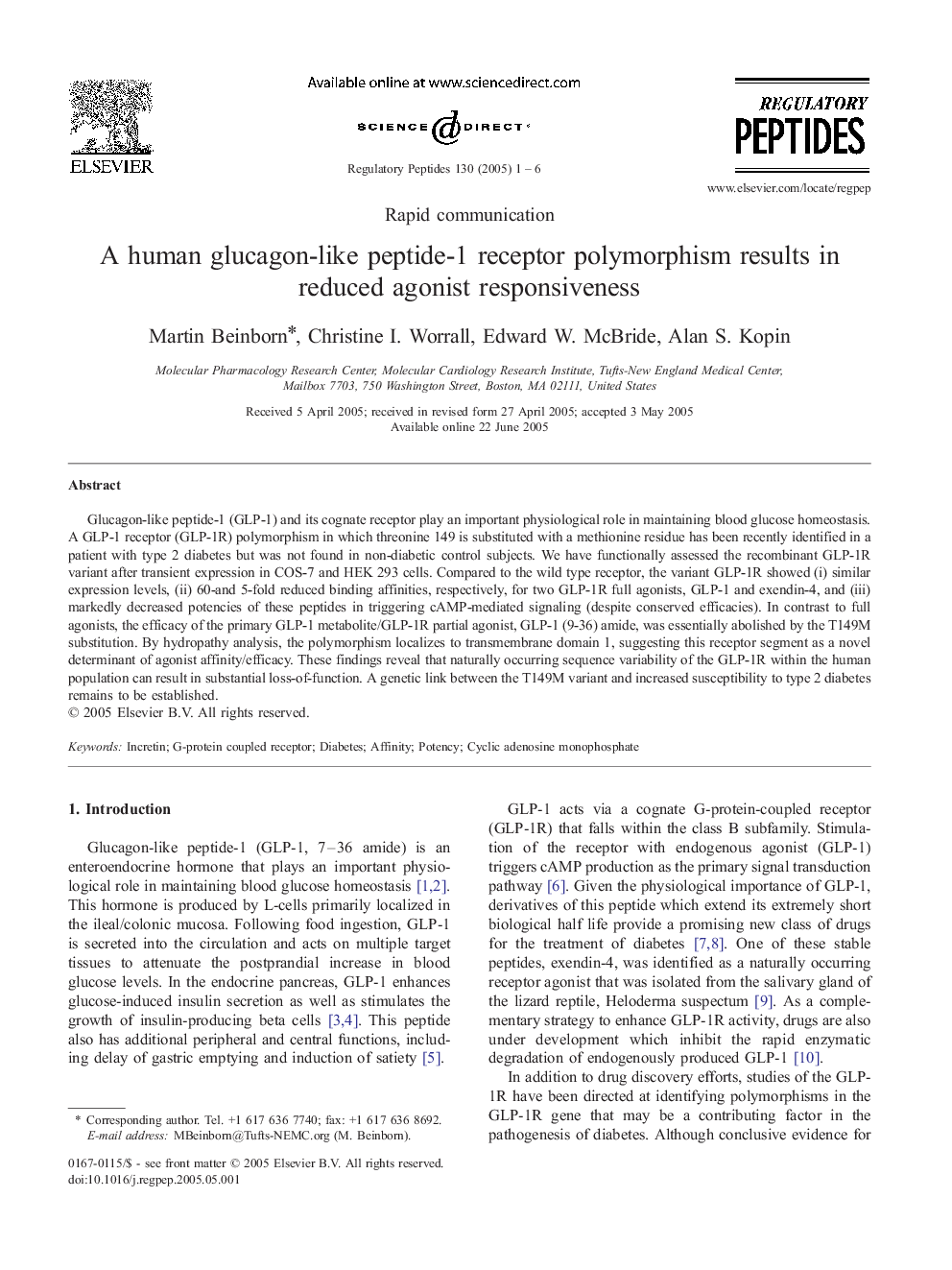| Article ID | Journal | Published Year | Pages | File Type |
|---|---|---|---|---|
| 9894384 | Regulatory Peptides | 2005 | 6 Pages |
Abstract
Glucagon-like peptide-1 (GLP-1) and its cognate receptor play an important physiological role in maintaining blood glucose homeostasis. A GLP-1 receptor (GLP-1R) polymorphism in which threonine 149 is substituted with a methionine residue has been recently identified in a patient with type 2 diabetes but was not found in non-diabetic control subjects. We have functionally assessed the recombinant GLP-1R variant after transient expression in COS-7 and HEK 293 cells. Compared to the wild type receptor, the variant GLP-1R showed (i) similar expression levels, (ii) 60-and 5-fold reduced binding affinities, respectively, for two GLP-1R full agonists, GLP-1 and exendin-4, and (iii) markedly decreased potencies of these peptides in triggering cAMP-mediated signaling (despite conserved efficacies). In contrast to full agonists, the efficacy of the primary GLP-1 metabolite/GLP-1R partial agonist, GLP-1 (9-36) amide, was essentially abolished by the T149M substitution. By hydropathy analysis, the polymorphism localizes to transmembrane domain 1, suggesting this receptor segment as a novel determinant of agonist affinity/efficacy. These findings reveal that naturally occurring sequence variability of the GLP-1R within the human population can result in substantial loss-of-function. A genetic link between the T149M variant and increased susceptibility to type 2 diabetes remains to be established.
Related Topics
Life Sciences
Biochemistry, Genetics and Molecular Biology
Biochemistry
Authors
Martin Beinborn, Christine I. Worrall, Edward W. McBride, Alan S. Kopin,
